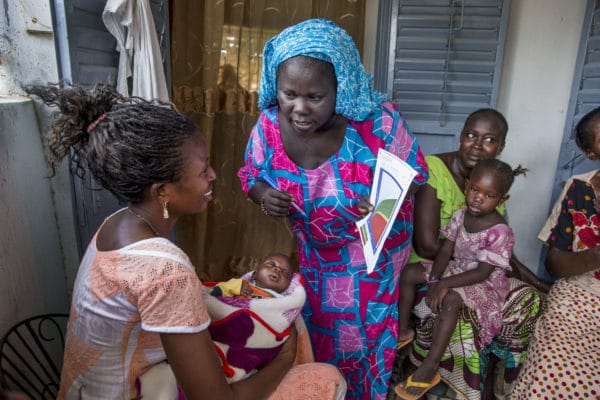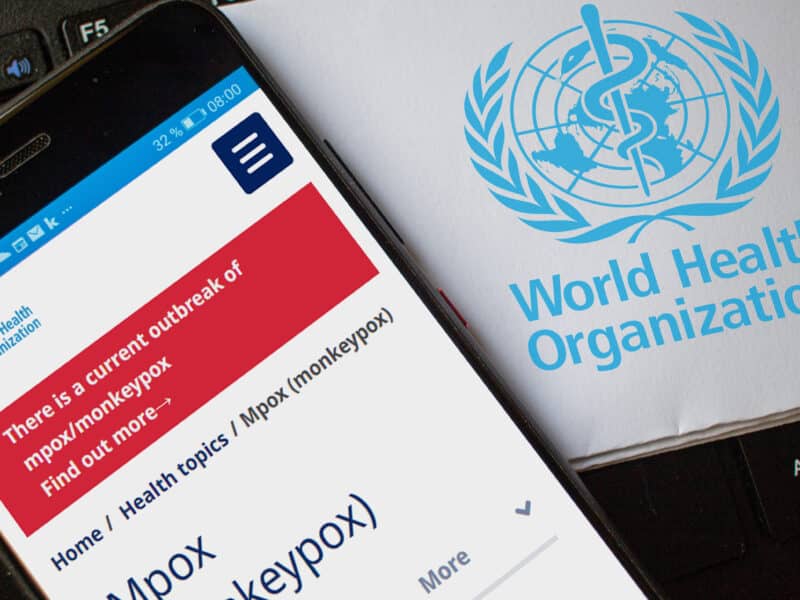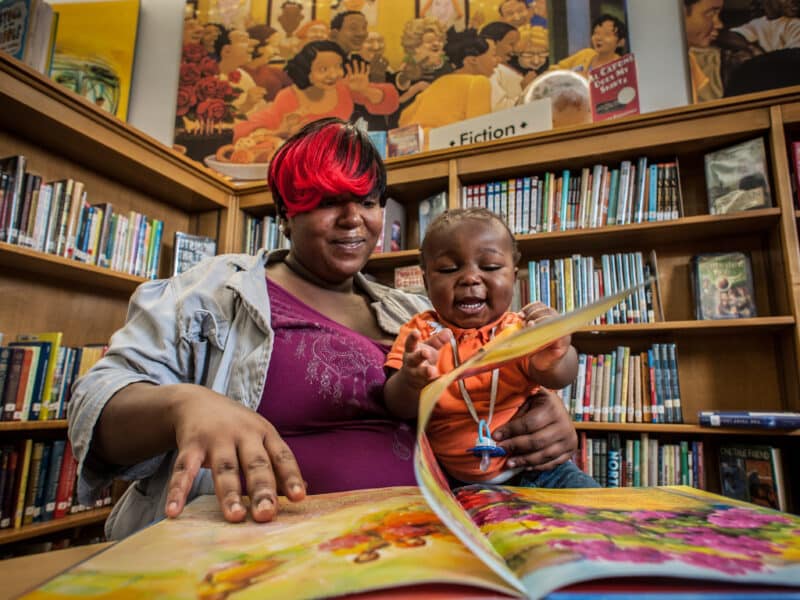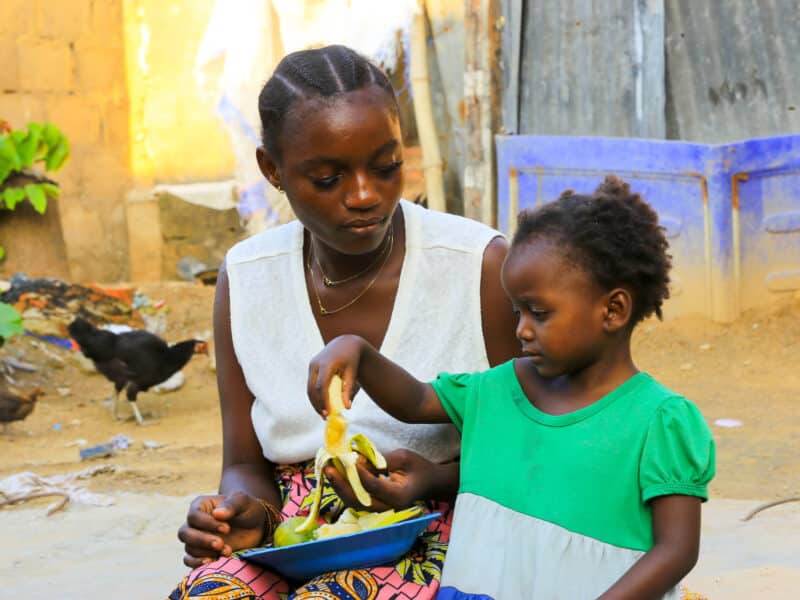When babies turn three or four months old, they tend to cry for reasons beyond hunger or a dirty diaper, the literature on child development shows.
By this time, they cry because they’re scared or they’re bored or they’re seeking attention, and it seems louder because their lungs are growing larger. It is also around this time that many women in the Democratic Republic of Congo (DRC) stop exclusively breastfeeding their babies, continuing to interpret all cries for hunger and, in frustration that they can’t soothe those cries with breast milk, decide they must supplement with a porridge called bouillie.
This insight was developed after researchers from the Johns Hopkins Center for Communication Programs-led Breakthrough ACTION project interviewed and observed dozens of women with young babies in the DRC to determine why more don’t exclusively breastfeed for six months, the recommended age. In the DRC and other low-income countries, it is critical for babies not to consume water or other food too early because it increases their risk of developing life-threatening illnesses from water-borne parasites and diseases.
“Mothers told us they always breastfeed when their babies cry,” says Breakthrough ACTION’s Nicole Russo, who works for CCP partner ideas42. “But a crying baby isn’t always hungry.”
Logically, it makes sense for women who can’t seem to soothe their growing babies with breast milk to assume those children need to eat something more substantial. Russo says if new mothers are reassured that crying is a normal part of infant development and they know other techniques for soothing their infant aside from breastfeeding, more mothers might make it to that critical six-month benchmark.
One of the missions of Breakthrough ACTION’s work in DRC is to support women to breastfeed exclusively for six months. Breastfed children in developing countries have at least six times greater chance of survival in the early months than non-breastfed children. An exclusively breastfed child is 14 times less likely to die in the first six months than a non-breastfed child and, according to the Lancet, breastfeeding drastically reduces deaths from acute respiratory infection and diarrhea, two major child killers.
“I gave bouillie because my child was crying,” a mother and farmer in southeastern DRC told researchers. “Before, the child did not cry. When I gave the bouillie, I noticed that the child was no longer crying.”
Even though women are told about the benefits of breastfeeding during prenatal counseling, these messages are usually delivered alongside many other important messages, making them easy to forget months later when an infant suddenly seems to be crying more often. It is not the social norm to exclusively breastfeed for six months in Lualaba province, where the research was done. The researchers found that only 15 percent of the women they spoke to actually made it to six months.
It can also be difficult to convince husbands that breastfeeding is best and, in these communities, they are often the decision makers.
“My husband will say our four-month old baby is crying because my breast milk is not nutritional enough, so I have to also give food,” said one mother who works in mining.
Armed with this new information gleaned from interviews with women in these communities, Breakthrough ACTION has developed new interventions targeting mothers, health center providers and community leaders to help women stick with exclusive breastfeeding for six months.
In one of these interventions, new mothers will receive an in-home counseling session around two months after their babies are born and volunteer counselors will walk them through a booklet of information which explains that crying is normal and doesn’t always have to be quieted with breastfeeding. They will learn soothing techniques, such as singing or patting on the back, and will learn about the critical benefits of breastfeeding.
Russo says the mothers and counselors will also create vision boards after imagining how things would be after six months if they stopped exclusive breastfeeding too early, with the goal of helping mothers proactively plan to overcome barriers to making it to six months. Mothers will receive bracelets that both remind them of their commitment to exclusive breastfeeding and open a dialogue with other mothers about why it’s so important.
“These women don’t have a lot of mentors who have breastfed for six months,” Russo says. “They say they don’t know anyone who has done this for six months. It’s an invisible behavior and we hope to make it more visible – and make it into a social norm in these communities. If we do, everyone benefits.”





